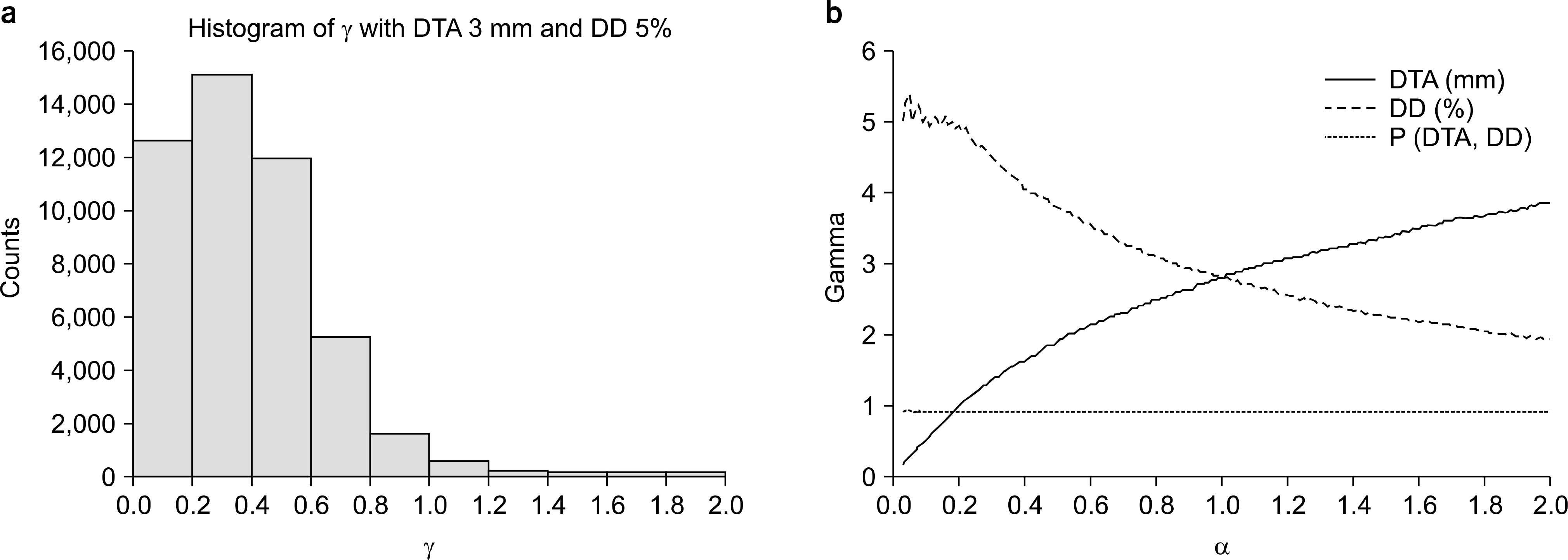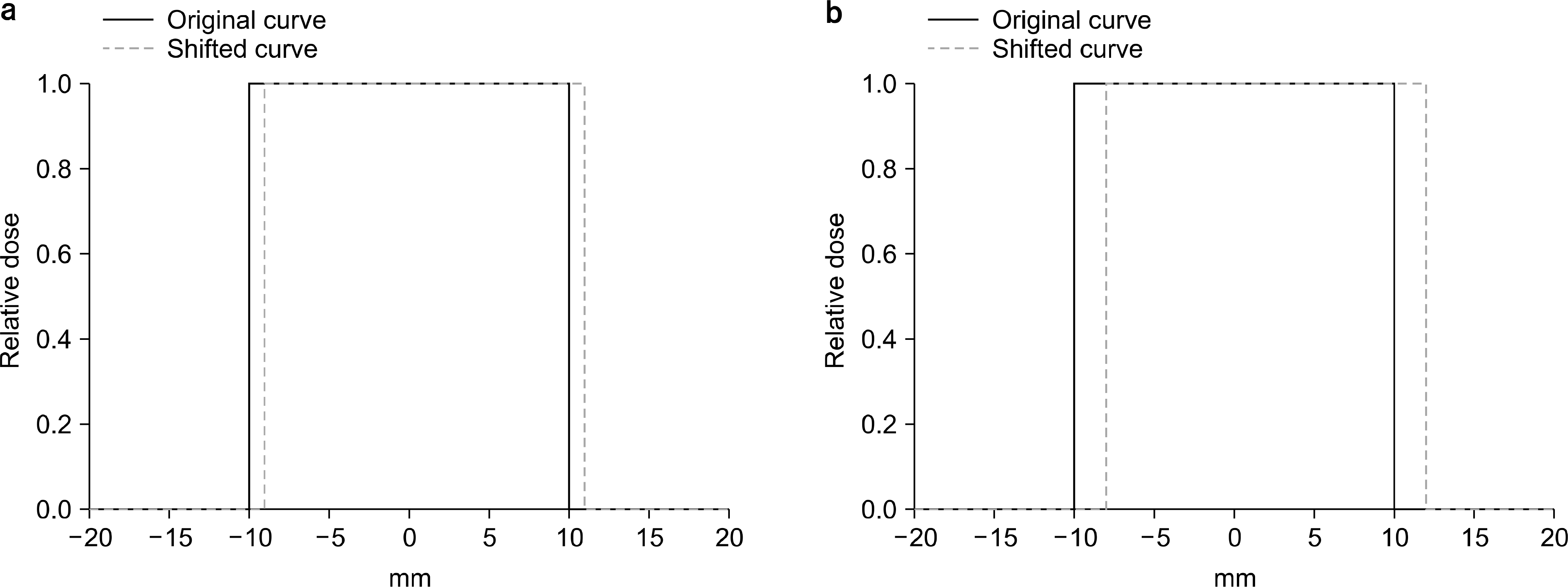Abstract
This review paper deals with the current statues of pre-treatment quality assurance conducted for Intensity modulated radiation therapy. Focusing on the issues relevant to two-dimensional verification of absorbed dose distribution, review was made for the papers published during the last 3∼4 years. Lastly, the future development direction was projected.
REFERENCES
1. Brahme A. Optimization of stationary and moving beam radiation therapy techniques. Radiother Oncol. 12(2):129–140. 1988.

2. Das IJ, Cheng C, Chopra KL, et al. Intensity-modulated radiation therapy dose prescription, recording, and delivery: Patterns of variability among institutions and treatment planning systems. J Natl Cancer Inst. 100(5):300–307. 2008.

3. Ulmer W, Pyyry J, Kaissl W. A 3D photon superposition/convolution algorithm and its foundation on results of Monte Carlo calculations. Phys Med Biol. 50(8):1767–1790. 2005.

4. Gifford KA, Horton JL Jr, Wareing TA, Failla G, Mourtada F. Comparison of a finite-element multigroup discrete- ordinates code with Monte Carlo for radiotherapy calculations. Phys Med Biol. 51(9):2253; (2006).
5. Vassiliev ON, Wareing TA, McGhee J, Failla G, Salehpour MR, Mourtada F. Validation of a new grid-based Boltzmann equation solver for dose calculation in radiotherapy with photon beams. Phys Med Biol. 55(3):581–598. 2010.

6. Ezzell GA, Galvin JM, Low D, et al. Guidance document on delivery, treatment planning, and clinical implementation of IMRT: report of the IMRT Subcommittee of the AAPM Radiation Therapy Committee. Med Phys. 30(8):2089–2115. 2003.

7. Ezzell GA, Burmeister JW, Dogan N, et al. IMRT commissioning: multiple institution planning and dosimetry comparisons, a report from AAPM Task Group 119. Med Phys. 36(11):5359–5373. 2009.

8. Low DA, Dempsey JF. Evaluation of the gamma dose distribution comparison method. Med Phys. 30(9):2455–2464. 2003.

9. Low DA, Harms WB, Mutic S, Purdy JA. A technique for the quantitative evaluation of dose distributions. Med Phys. 25(5):656–661. 1998.

10. Both S, Alecu IM, Stan AR, et al. A study to establish reasonable action limits for patient-specific quality assurance in intensity-modulated radiation therapy. J Appl Clin Med Phys. 8(2):1–8. 2007.

11. Kim JI, Chung JB, Park YK, et al. A multi-institutional study for tolerance and action levels of IMRT dose quality assurance measurements in Korea. J Appl Clin Med Phys. 14(2):3964. 2013.

12. Yan G, Fox C, Liu C, Li JG. The extraction of true profiles for TPS commissioning and its impact on IMRT patient-specific QA. Med Phys. 35(8):3661–3670. 2008.

13. Li JS, Lin T, Chen L, Price RA, Ma CM. Uncertainties in IMRT dosimetry. Med Phys. 37:2491; (2010).

14. Ju SG, Han Y, Kum O, et al. Comparison of film dosimetry techniques used for quality assurance of intensity modulated radiation therapy. Med Phys. 37(6):2925–2933. 2010.

15. Margalit DN, Chen YH, Catalano PJ, et al. Technological advancements and error rates in radiation therapy delivery. Int J Radiat Oncol Biol Phys. 81(4):e673–679. 2011.

16. Nelms BE, Simon JA. A survey on planar IMRT QA analysis. J Appl Clin Med Phys. 8(3):2448; (2007).

17. Kruse JJ. On the insensitivity of single field planar dosimetry to IMRT inaccuracies. Med Phys. 37(6):2516–2524. 2010.

18. Nelms BE, Zhen H, Tomé WA. Per-beam, planar IMRT QA passing rates do not predict clinically relevant patient dose errors. Med Phys. 38(2):1037–1044. 2011.

19. Stasi M, Bresciani S, Miranti A, Maggio A, Sapino V, Gabriele P. Pretreatment patient-specific IMRT quality assurance: a correlation study between gamma index and patient clinical dose volume histogram. Med Phys. 39(12):7626–7634. 2012.

20. Li H, Dong L, Zhang L, Yang JN, Gillin MT, Zhu XR. Toward a better understanding of the gamma index: Investigation of parameters with a surface-based distance method. Med Phys. 38(12):6730–6741. 2011.
21. Zhen H, Nelms BE, Tome WA. Moving from gamma passing rates to patient DVH-based QA metrics in pretreatment dose QA. Med Phys. 38(10):5477–5489. 2011.

22. Olaciregui-Ruiz I, Rozendaal R, Mijnheer B, van Herk M, Mans A. Automatic in vivo portal dosimetry of all treatments. Phys Med Biol. 58(22):8253–8264. 2013.
Fig. 1.
Example of the gamma index and parameter selection of the gamma index, (a) histogram of the gamma map wit 5%/3 mm criteria (b) DTA/DD criteria satisfying P (DTA, DD) 90%.20)

Fig. 2.
Dose shifting and c index passing rate. (a) A 2-cm strip curve shifted 1 mm and (b) a 2-cm strip shifted 2 mm.20)

Table 1.
Average passing rate and standard deviation of the IMRT QA results for 53 fields for the three photon beam models. The measurement was performed with the MapCHECK device. IMRT plan was generated using the BM4 beam model for each patient. The same beam parameters MUs, segment weights, etc were then employed to distributions with each of the three beam models. %Diff and DTA acceptance criteria were used to evaluate the agreement between calculated and measured dose distribution. 12)
| CC13 model (BM6) | CC04 model (BM4) | Deconvolved∗ model (BM08) | |
|---|---|---|---|
| 2%/2 mm | 81.6±7.8 | 92.6±3.3 | 96.8±2.3 |
| 3%/3 mm | 93.8±4.1 | 98.9±1.0 | 99.4±0.6 |
Table 2.
Pearson correlation values r and two-tailed p-values correlating the magnitude of anatomy dose errors to three IMRT QA Gamma passing rate performance metrics. Significant p-values <0.01 are italicized for emphasis. Note: The statistically significant correlations have positive r-value positive slope indicating that the highest critical dose errors happen at the higher Gamma passing rates.18)
Table 3.
Pearson product-moment correlation coefficient (r) and two-tailed p-values correlating the magnitude of anatomy dose errors to gamma passing rates over three sets of gamma criteria. In all cases, the percent difference normalization was local to maximize sensitivity, and the lower threshold for analysis was 10% of the global maximum dose. PDP correlation coefficients are also shown for comparison.21)




 PDF
PDF ePub
ePub Citation
Citation Print
Print


 XML Download
XML Download